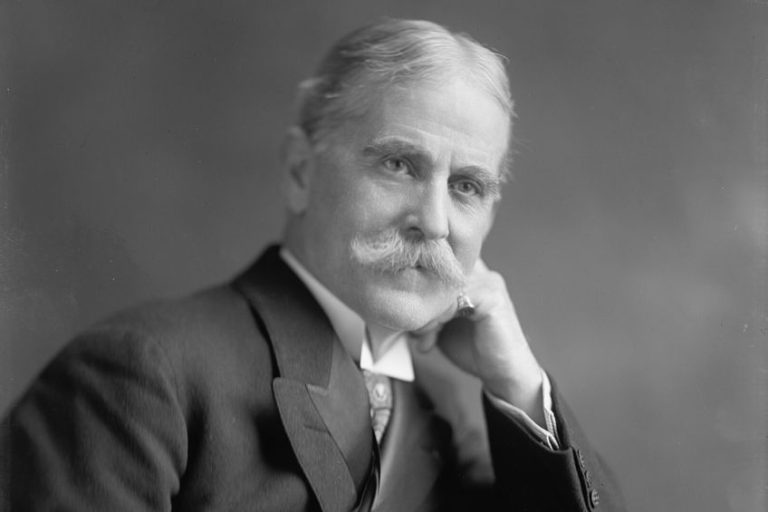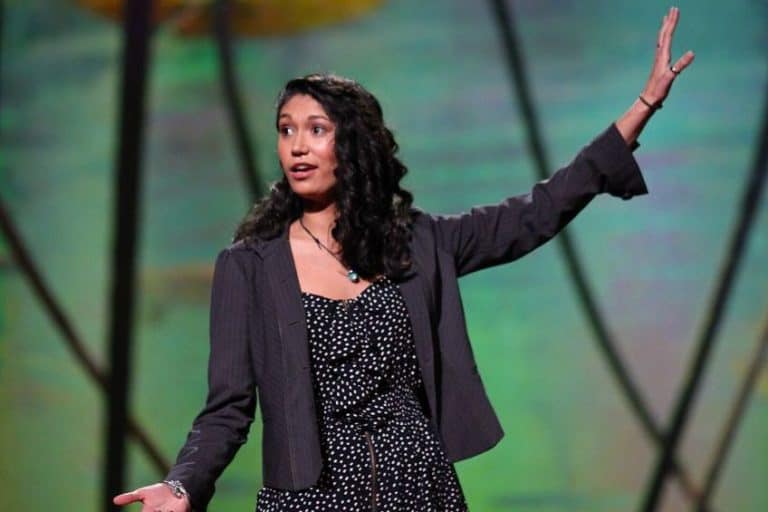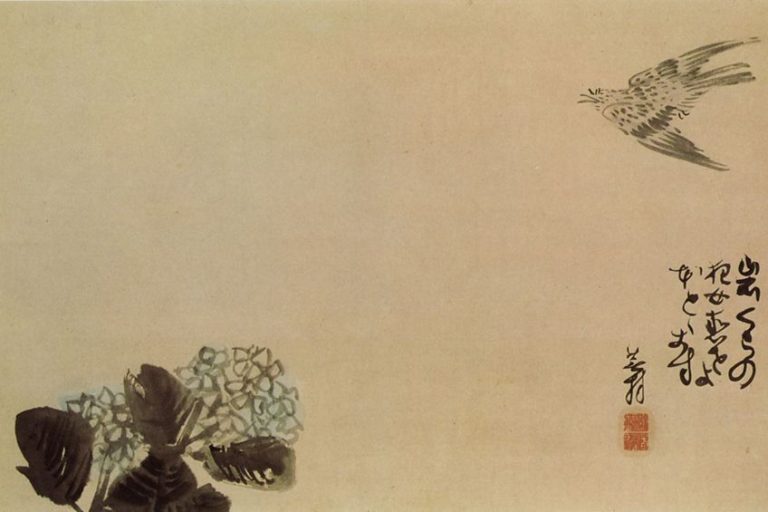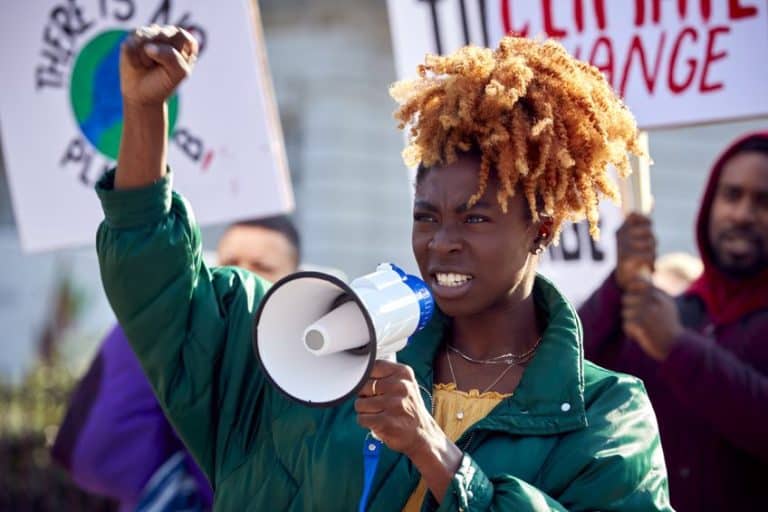Types of Conflict in Literature – The World Reflected in Words
What does it mean to have conflict in literature? That is our question today. I will guide you through an examination of the purpose of conflict in literature, the uses of both internal and external conflict, the different types of conflict in literature, the existence of narratives that do not have conflict at all, and a number of examples to help illustrate the concept of literary conflict. Hopefully, this should be an interesting read ahead, and if you feel that this may be the case too, then keep on reading and see what you can learn!
Table of Contents
- 1 A Look at the Types of Conflict in Literature
- 2 Summary of the Types of Conflict in Literature
- 3 The Purpose of Conflict in Literature
- 4 The Uses of Internal and External Conflict
- 5 The Different Types of Conflict in Literature
- 6 A Few Examples of the Different Types of Conflict in Literature
- 6.1 Against the Self: The Picture of Dorian Gray (1890) by Oscar Wilde
- 6.2 Against Another Character: A Game of Thrones (1996) by George R.R. Martin
- 6.3 Against the Natural World: The Old Man and the Sea (1952) by Ernest Hemingway
- 6.4 Against Society: Nineteen Eighty-Four (1949) by George Orwell
- 6.5 Against the Supernatural: Pet Sematary (1983) by Stephen King
- 6.6 Against Fate: The Lord of the Rings (1954 – 1955) by J.R.R. Tolkien
- 6.7 Against Technology: Frankenstein (1818) by Mary Shelley
- 7 A Story Without Conflict
- 8 Frequently Asked Questions
A Look at the Types of Conflict in Literature
There are so many different aspects of literature that exist for all manner of reasons. It would be impossible to explore absolutely everything that can be found in literature because literature, by its very nature, can encompass all of human experience. If we can experience it, we can write about it in some way. And one of the things that can occur in reality, and is therefore found in literature too, is conflict.

In the real world, conflict is everywhere. There are forms of conflict that exist between people and all manner of things. We have conflict with each other, systems in society, the natural world, and so on. These kinds of conflicts can then be said to translate over into the literary world. However, what exists in literature can often exist for some deeper purpose, which may not be the case in reality. In the real world, conflict can be said to simply exist, but in literature, it can be formulated in such a way that reinforces themes, characterization, and so on. Today, we will be having a look at a few of the different types of conflict in literature, because there are several that can be pointed toward in a very general sense. Our purpose today will be to focus on that more general sense of the concept.
Before we proceed with our discussion of such things, we will stop for a few moments to instead have a look at a summary of the things to come.
Summary of the Types of Conflict in Literature
The reason that we are stopping for a few moments is because a summary can always be a helpful thing. A summary can prepare us for what is to come, and whenever I used to provide these to my students, especially when it came to literature, they would be very helpful as study aids. Maybe they could serve a similar purpose for you.
- Conflict is commonly found in literature. While there are instances of literature that do not make use of conflict, the use of some kind of a driving force behind the action in a narrative is very common.
- Conflict in literature can be divided into internal as well as external conflict. Whenever a character has a conflict within their own mind, it can be deemed internal whereas everything else is external.
- There are various types of conflict in literature. When it comes to the actual different types of conflict that can be found in literature, there are quite a few. For instance, characters could be in conflict against other characters, society itself, the natural world, and so on,
This has been my little summary of the things that are soon to come in this particular article. However, we can interrogate each of these sorts of points in a lot more detail.
This is exactly what we are going to do as we proceed with a deeper examination of the different types of conflict in literature.
The Purpose of Conflict in Literature
Conflict can be seen as the driving force behind characters doing things in a narrative. This is why we usually perceive literary conflict as integral to most narratives. There has to be something that gets the characters to do things in a story. This is why conflict exists. If a character never has to deal with some issue, then they’ll never do anything at all. So, this is why conflict exists in stories. However, we need to look at those different types of conflict in literature to truly understand them, and so that’s what we’ll do!

The Uses of Internal and External Conflict
Conflict can often be said to come in two major categories. While all instances of conflict make use of characters who are, in some way, in conflict with something, that “something” can vary. We will get into some of those things in the section below, but first, what differentiates “internal” from “external”? Well, it’s actually rather simple. Whenever conflict is internal, it is conflict that a character has within themselves. For instance, a character is struggling with some choice that they made, or they have a mental illness of some kind. The conflict is therefore located in an internal space. When it comes to external conflict, that is far broader.
It is everything outside of a character’s inner existence. You will see that this entails most instances of literary conflict in the section below.
The Different Types of Conflict in Literature
We have gone over the reason for conflict, but we have not actually looked at the different types of conflict in literature. That is what we’ll look at here! Below, I will show you those various types so that you can have a better chance of understanding the concept of conflict and how it can be implemented. Before I get into the different types of conflict in literature, it should be noted that each of these types can be seen as characters against each of the concepts below. So, it would be “characters against the self” and so on. Okay, we’re done with that, so we can get into it properly now!

Against the Self
In terms of internal conflict in literature, this is the only true form of it. When a character has some kind of a conflict within themselves, they are in conflict with the self. This is a rather simple concept to understand as we have all likely faced some kind of an issue related to our own identity in the world. We have struggled with figuring out who we are or what our place is in the world.
These are the kinds of ideas that can be explored in narratives that feature this particular type of conflict.
Against Another Character
When we think of the different types of conflict in literature, this is likely one that comes up first because it is probably the most common. Characters, in a similar sense to people in the real world, are in conflict with other people. Other people in a narrative have different goals for the protagonist, and so this will inevitably lead them to have differences that need to be resolved in some or another way. In some narratives, this means that compromises need to be made or that there will be a situation where an enemy can become a friend. Of course, they could also just kill each other too!
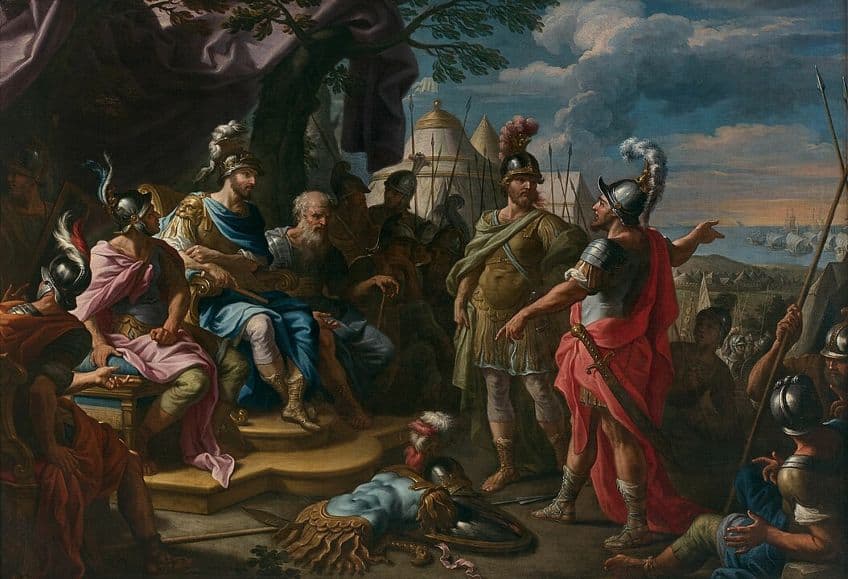
Against the Natural World
We often think of the natural world as a benevolent thing that nurtures us, but if you have ever been trapped in the natural world with no real way to escape and no means to defend yourself against what’s out there, your tune might change a little. The natural world is a tough place to survive, and in narratives that feature characters who have to do battle against the natural world in some way, we can see why the hostile forces of nature can be such a fantastic literary adversary.
The fight against animals that want us dead, the struggle against weather events that are indifferent to us, and so on, are all great examples of the way that the natural world can be levied as a great type of conflict in literature.
Against Society
I have just mentioned how we can go up against the natural world seeing as it is often rather hostile toward us, but what about the world in which humans live? We have, for the most part, separated ourselves from the natural world, and so now we have our own world. This world can also be hostile. Now, strictly speaking, society is made up of individual people or, in narrative terms, characters, but the systems that control the various forces of society are often beyond the simple control of individual actors in the world. For instance, imagine a society that is particularly prejudiced in some way and so certain groups are imprisoned for no real reason. These are the sorts of things that a narrative could fight against.

Against the Supernatural
Humanity often has an instinctual fear of the unknown, and the unknown is where one can find the supernatural. These are things that do not actually exist, yet we believe them to exist for some or another reason. So, a story might pit some characters against a force such as ghosts or zombies. These are not things that exist, although some may disagree to varying degrees, but their depiction in media can certainly be entirely fictional and far beyond the realm of any kind of belief.
However, literature doesn’t need to care about anything like that, now does it?
Against Fate
When we look at the various types of conflict in literature, we can see that fate often plays a very strong role. This is because there are conflicting beliefs among humans about whether our world is determined by fate or whether free will plays a far larger role. In narratives, this idea can be explored more fully. Fate is a thing that can force a character to do a certain thing for some or another reason. Probably the easiest one to imagine is the common fantasy staple of a character being the “chosen one”, and regardless of their personal desires with regard to what they want to do with their lives, they are still reigned in by fate itself.

Against Technology
The march of technology is eternal. We may think that technology is some recent thing because we have an association with this world and things like computers and phones. However, the development of longbows, boarding techniques for ancient ships, and even the development of writing itself are all instances of technology. And we have been fighting against technology since the dawn of time. Imagine a story in which there is a war between two fantasy sides of a conflict, but one of them has just developed a kind of bow and arrow that can shoot further than their enemy.
Suddenly, the battle is decided because of a weapon rather than any other reason. This shows that technology can play a crucial role in literary conflict.
A Few Examples of the Different Types of Conflict in Literature
Back in my old position as an English and literature teacher, I would often point toward examples as a means of helping to understand concepts. We have already looked at some of the different types of conflict in literature in the section above, but it’s now time to have a look at those concepts by actually examining a few instances of how they can be used. This should benefit anyone who wishes to learn how to understand the use of the various types of conflict in literature. Before I dive in here, let me just say that this list of examples is in the same order as the discussion of the different types of conflict in literature above. So, they are in the order that they have already been shown. This is why they are not in chronological order of publication.

Against the Self: The Picture of Dorian Gray (1890) by Oscar Wilde
| Date Published | 1890 |
| Type of Text | Novel |
| Genre | Philosophical fiction |
| Literary Movement | Gothic literature |
| Topic | Personal degeneration |
The Picture of Dorian Gray is the tale of a man who has a magical painting of himself that allows him to stay forever young and healthy. As he engages in a life of debauchery, the painting is the thing that takes all that abuse. He remains young and beautiful, and this allows him to remain a hedonist. This book makes use of this concept to show that what Dorian Gray has done to himself has very real consequences even if he cannot see it reflected in a mirror.
He struggles with his own identity throughout the text as he pursues his libertine lifestyle.

Against Another Character: A Game of Thrones (1996) by George R.R. Martin
| Date Published | 1996 |
| Type of Text | Novel |
| Genre | Fantasy |
| Literary Movement | Contemporary literature |
| Topic | Political intrigue |
A Game of Thrones is the first in a series of books that was adapted into a particularly famous HBO television series. So, this one will probably be known to many because the story is full of characters in conflict with one another.
They are all constantly fighting, in both physical and political terms, and this is a persistent aspect of the intrigue of the narrative as a whole.

Against the Natural World: The Old Man and the Sea (1952) by Ernest Hemingway
| Date Published | 1952 |
| Type of Text | Novella |
| Genre | Literary fiction |
| Literary Movement | Modernism |
| Topic | Endurance |
The Old Man and the Sea is probably one of the most famous texts of the Modernist movement, and it is about a man who is down on his luck as he attempts to catch a marlin on the open ocean. The story is filled with difficulties from the natural world such as the ocean itself, the marlin, and sharks becoming his adversaries.
This story of endurance against nature has remained a timeless tale.

Against Society: Nineteen Eighty-Four (1949) by George Orwell
| Date Published | 1949 |
| Type of Text | Novel |
| Genre | Dystopian fiction |
| Literary Movement | Post-WWII fiction |
| Topic | Authoritarianism |
Nineteen Eighty-Four is an archetypal dystopian fiction novel. The text shows a society that is deeply authoritarian, and the protagonist attempts to fight against it in his small way. The world depicted in this novel has become one of the most famous in all dystopian fiction.
Many terms from it have become commonly used political expressions, and that is because it captured the often-futile battle against authoritarianism so well.

Against the Supernatural: Pet Sematary (1983) by Stephen King
| Date Published | 1983 |
| Type of Text | Novel |
| Genre | Horror |
| Literary Movement | Contemporary |
| Topic | A cursed cemetery |
Pet Sematary is a great horror novel that depicts a conflict against the supernatural forces of the world. In this text, the protagonist learns of a magical cemetery, which has a sign painted by children who have misspelled it (hence the name of the book), and this cemetery can bring pets back to life. However, the protagonist suffers loss and brings back more than just pets, and they do not come back quite right.
This fight against the supernatural is depicted as brought about by human hubris, but it is still a supernatural threat.

Against Fate: The Lord of the Rings (1954 – 1955) by J.R.R. Tolkien
| Date Published | 1954 – 1955 |
| Type of Text | Novel |
| Genre | High fantasy |
| Literary Movement | Non-specified |
| Topic | Adventure |
The Lord of the Rings is a rather famous book (or trilogy, depending on how you look at it), and many of the characters can be said to have some kind of conflict with fate. For instance, Frodo is destined to carry the One Ring to Mordor while Aragon is destined to restore the monarchy.
These kinds of fate-oriented narratives can be found in many examples of fantasy literature, but this particular text is a rather archetypal form of it.

Against Technology: Frankenstein (1818) by Mary Shelley
| Date Published | 1818 |
| Type of Text | Novel |
| Genre | Science fiction |
| Literary Movement | Gothic literature |
| Topic | Resurrection of life |
Frankenstein is not a text that many people know in comparison to the various film adaptations that have often painted the monster as an immensely violent creature. The monster may be the product of science, and so we can see this text as showing a deep conflict with technology, it is also a text that shows us that what we think of as the “bad guy” is not always necessarily correct.
In many ways, the creator of the technology is also a villain, and this book shows this well.

A Story Without Conflict
Ask many literature teachers and they’ll shout into the void that all literature must have conflict! But this is not really the case. It may be true that the vast majority of literature out there does have some kind of conflict, or at least if said literature has a narrative, such as with prose, film, and so on. However, you can get stories that do not have any conflict in them. They are not usually the most popular of all genres, but they certainly can be found. These are works of fiction in the slice-of-life genre.
Now, the term “slice of life” is an incredibly broad term.
It does not necessarily connote a specific genre. While most slice-of-life will typically be located in a fictionalized version of our world, there could be a slice-of-life narrative in a fantasy world, a science fiction one, and so on. It could be anywhere. So, what is a slice-of-life story then? Well, this term refers to a type of genre that involves characters essentially just living life. This could mean that they go to the shops and enjoy themselves, they could go on a date, prepare themselves a bath, go for a walk, and whatever else people just do in their lives. These stories capture the minutiae of life.

It’s not about some big conflict that needs to be resolved or the development of characters or any of the things that we would usually associate with “standard literature”. Instead, it’s just about people living their lives in ordinary ways. So, not all narratives require the existence of some kind of conflict. Although, most instances of literary narratives do include some form of conflict.
Today, I have discussed a number of different instances of the use of the types of conflict in literature. As has been shown, there are many ways that conflict can be shown and used in literary circumstances. I have demonstrated this by explaining the actual concept of literary conflict itself, the differences between internal and external conflict, the use of no conflict in a narrative, and a discussion of the actual different types of conflict in literature and examples to go along with them. I can only hope that this has been a helpful examination of conflict in literature and that you will now pay closer attention to the use of conflict in the stories that you read.
Frequently Asked Questions
What Is Conflict in Literature?
In very basic terms, the concept of literary conflict is simply a fictionalized version of real-world conflict. The idea is that it is something that causes some kind of an issue of some or another kind that the characters in the narrative now need to deal with. For instance, the characters in a story are faced with a crisis of some kind and they now need to go on a journey to put a stop to said crisis. This crisis would be one instance of conflict within that narrative that needs to be resolved by the end of the narrative.
What Are the Different Types of Conflict in Literature?
There are so many different types of conflict in literature, such as the use of characters who are against society in some way or who go up against the supernatural. Conflict in literature simply means something that forces the characters to do something, and it is typically something that is bad in some way. Someone is murdered at the beginning of a story and the killer must be found, and so on.
What Is the Difference Between Internal and External Conflict in Literature?
This distinction is a rather simple yet important one. When we have a look at literary conflict, we see that it has to do with something, of some kind, that is against characters. However, when that thing is outside of the character, such as society or other characters, the conflict is external. Internal conflict, on the other hand, is conflict that a character has within themselves. Think of a character struggling with their own actions or mental illness as instances of internal conflict.
Can There Be a Story With No Conflict?
There is a name for a genre that can exclude conflict and that is the slice-of-life genre. This genre entails the stories of people simply living their lives. There does not need to be some great conflict at play because it could simply depict characters shopping, going on dates, and so on. The genre shows how people live their lives rather than how people have to do battle against some force in the world.
What Are Examples of Conflict in Literature?
There are so many different types of conflict in literature and so many different particular cases of conflict. For examples, when it comes to the use of characters versus society, you may find instances of narratives such as Orwell’s Nineteen Eighty-Four (1949), which shows a totalitarian state that the protagonist wishes to rebel against. Other examples can be found in how the sea itself becomes a source of conflict in The Old Man and the Sea (1952) by Ernest Hemingway, or how the use of technology is seen as a source of conflict in Shelley’s Frankenstein (1818).
Justin van Huyssteen is a freelance writer, novelist, and academic originally from Cape Town, South Africa. At present, he has a bachelor’s degree in English and literary theory and an honor’s degree in literary theory. He is currently working towards his master’s degree in literary theory with a focus on animal studies, critical theory, and semiotics within literature. As a novelist and freelancer, he often writes under the pen name L.C. Lupus.
Justin’s preferred literary movements include modern and postmodern literature with literary fiction and genre fiction like sci-fi, post-apocalyptic, and horror being of particular interest. His academia extends to his interest in prose and narratology. He enjoys analyzing a variety of mediums through a literary lens, such as graphic novels, film, and video games.
Justin is working for artincontext.org as an author and content writer since 2022. He is responsible for all blog posts about architecture, literature and poetry.
Learn more about Justin van Huyssteen and the Art in Context Team.
Cite this Article
Justin, van Huyssteen, “Types of Conflict in Literature – The World Reflected in Words.” Art in Context. March 15, 2024. URL: https://artincontext.org/types-of-conflict-in-literature/
van Huyssteen, J. (2024, 15 March). Types of Conflict in Literature – The World Reflected in Words. Art in Context. https://artincontext.org/types-of-conflict-in-literature/
van Huyssteen, Justin. “Types of Conflict in Literature – The World Reflected in Words.” Art in Context, March 15, 2024. https://artincontext.org/types-of-conflict-in-literature/.




